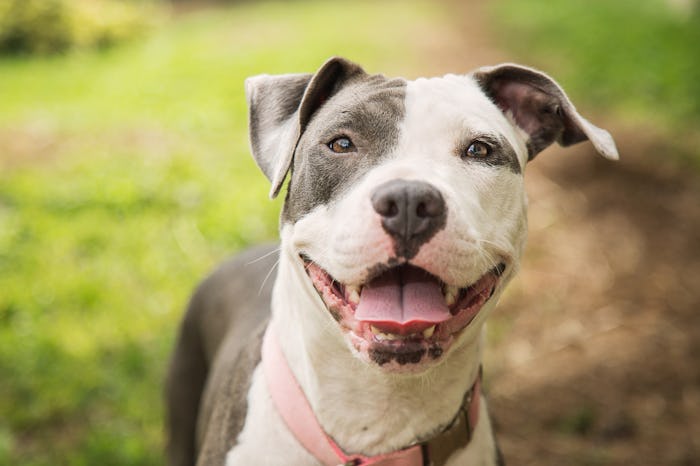Life

Before Using Essential Oils Around Your Pets, Here's What You Should Know
Let's be honest: Is a natural mama routine even real if it doesn't include coconut oil, avocados, and something related to essential oils? Boasting benefits that range from digestive wellness to calming a frazzled mind, essential oils are the "it" health item to have in your arsenal right now. Parents love them for helping to soothe a baby to sleep and it's hard to deny that they smell pretty d*mn good. But are essential oils safe for pets?
Yes, says Jeena Lugo, essential oil expert and CEO of Got Oil Supplies, but not without adhering to a few conditions first. First, Lugo says, keep the parts of essential oil ration to water very low. You should also keep the door open so pets are free to leave a room if necessary. As for topical application and internal ingestion, Lugo says it's especially important to take precautions with cats. "Cats lack some liver enzymes that humans do have and thus topical and internal ingestion of essential oils can be dangerous," she says. "They can’t metabolize the oils like we can."
According to the Young Living website, your animal's size affects the amount of oil that can be topically applied. For smaller animals like cats, the company recommended using three to five drops that have been diluted 80 to 90 percent prior to application (e.g. one drop of oil would be mixed with four to five drops of a carrier oil). Larger animals, like dogs, can handle three to five drops and don't require dilution unless the label indicates otherwise.
One veterinary expert says the use of essential oils with pets also comes down to the quality of the oils you choose. "We don’t outlaw all pet food because there are low quality brands on the market — we just pick a better food," Dr. Melissa Shelton noted in a Healthy Pets article. When you are choosing essential oils, you'll want to be sure to read the labels, check the cost (e.g. if the price sounds too good to be true, it probably is), and look into the kind of testing that has been done on the oils, noted the Herbal Academy.
When it comes to your non-fur kiddo, there are also a few precautions you'll want to take. If you are applying oils to your child's skin, it's important to first dilute them with what is known as a carrier oil, such as olive, almond, coconut, or jojoba. According to Mama Natural, if your child is a newborn to 6 months, you should use oils sparingly and use a .25 percent solution when you do apply them, diluting one drop of essential oil per 1.5 tablespoons of carrier oil. The website noted that children 6 months to 2 years should be treated with a .25 percent to .5 percent solution, diluting one drop of essential oil per one tablespoon of carrier oil. Older children and adults can work with different combinations. These applications should be regarded in the case of all essential oils.
If you don't have an essential oils diffuser on hand, then you can also try mixing oils in a spray bottle with water and misting over furniture, carpet, or linens. It's also important to keep in mind that certain oils are harmful when used on or around young children, like peppermint and clary sage. In addition to lavender, it is safe to diffuse and topically apply (when mixed with a carrier oil) several oils for children 2 years and under, including bergamot, lemon, patchouli, tea tree, and cinnamon leaf. No essential oils should be given orally to children.
Moral of the story? Whether you're considering using essential oils for your furry or non-furry kids, you'll want to take precaution and follow guidelines for diffusing and applying with care. Because sometimes you really can have too much of a good thing.
Check out Romper's new video series, Romper's Doula Diaries:
Watch full episodes of Romper's Doula Diaries on Facebook Watch.